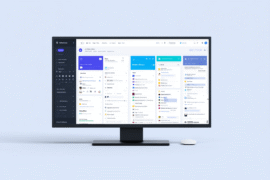This article may contain references to products or services from one or more of our advertisers or partners. We may receive compensation when you click on links to those products or services. Nonetheless, our opinions are our own.
The information presented in this article is accurate to the best of our knowledge at the time of publication. However, information is subject to change, and no guarantees are made about the continued accuracy or completeness of this content after its publication date.
Are you prepared to save some money without needing to be concerned about your finances? The four-day shopping event on Amazon Prime Day is a good opportunity to find electronics, appliances, and other everyday items at significant discounts. It can be challenging to maneuver these large sales without overspending or succumbing to impulse purchases.
We’ll provide information on preparing for Prime Day, creating a budget, and finding good deals while managing your finances wisely.
- What Is Prime Day and Why Is It a Big Deal?
- Prime Day Shopping Strategies to Save Big
- Prime Day Shopping Do’s and Don’ts
- Manage Your Cart Like a Pro
- Watch Out for Impulse Buys
- After the Sale: Avoiding the Spending Hangover
- Conclusion: Make Prime Day Work for You
- Frequently Asked Questions
- Recommended Reads
What Is Prime Day and Why Is It a Big Deal?
Prime Day is Amazon’s annual shopping event featuring exclusive deals for Prime members. In 2023, the sale runs for four full days, from July 10 through July 13, and includes massive discounts across tech, home goods, fashion, and more.
The hype is real, but so is the risk of overspending. Having a clear strategy before you shop can significantly reduce the risk of overspending.
Prime Day Shopping Strategies to Save Big

1. Make a List Like You’re Grocery Shopping
Going into a sale without a list is like shopping hungry; you’ll end up with things you don’t need. Think about what you want or need. Is it a new vacuum cleaner or a laptop monitor? List those must-haves and stick to them to avoid impulse spending.
2. Set a Budget (And Stick to It)
Budgets are not limits, they’re guardrails. Decide how much you’re willing to spend during the sale. This helps you walk away feeling good about your choices, rather than stressed about your credit card bill.
3. Use Your Wishlist to Track Deals
Build your Amazon Wishlist in advance. This gives you a clean, organized way to monitor discounts and avoid scrambling when deals go live. Think of it as your personalized deal map.
4. Compare Prices Before You Buy
Amazon isn’t always the cheapest option. Use tools like CamelCamelCamel or Honey to track historical prices and make sure the “deal” is truly a bargain. This prevents overpaying for products that may be similarly priced year-round.
Prime Day Shopping Do’s and Don’ts
Do:
Check Lightning Deals: These limited-time offers go fast, so be ready.
Use Amazon’s Daily Deals Page: These rotate daily and can feature deep discounts.
Pay Attention to Time Zones: Deal times vary, especially if you’re not in Pacific Time.
Don’t:
Skip the Reviews: Customer feedback can save you from buying faulty or low-quality products.
Buy Based on FOMO: Just because it’s trending doesn’t mean it’s worth your money.
Ignore Your Prime Membership Status: Only Prime members get access. Sign up for a free trial if needed.
Manage Your Cart Like a Pro
Don’t let it pile up with duplicates or filler items. Review your cart often, and ask yourself: “Do I need this?” If not, remove it. Shopping should be intentional, not reactive.
Helpful Tip: Save your cart for review later in the day. Some prices fluctuate, and waiting may help you make better decisions.
Watch Out for Impulse Buys
Even with a plan, you might be tempted. If something catches your eye, pause. Ask, “Would I still want this if it weren’t on sale?” If the answer is no, skip it. Emotional shopping often leads to financial regret.
After the Sale: Avoiding the Spending Hangover
1. Reflect on Your Purchases
Review your buys and appreciate what you love. Don’t dwell on what you missed; it’s already gone, and there will always be more deals in the future.
2. Wait Before Making Additional Purchases
Implement a 24-hour rule before buying anything post-sale. This gives you clarity and reduces impulsive follow-ups.
3. Keep Your Receipts
Keep receipts and digital confirmations handy. If something disappoints or doesn’t meet expectations, return it within Amazon’s return window.
Conclusion: Make Prime Day Work for You
Amazon Prime Day is a great time to save money, but if you don’t have a plan, you could end up spending too much. You can enjoy the thrill of the sale without feeling bad about it if you make a clear list, stick to your budget, and think about each purchase carefully. Stay focused, shop smart, and let your purchases help you reach your long-term goals instead of just giving you a thrill.
Frequently Asked Questions
What is Amazon Prime Day?
Amazon Prime Day is an annual shopping event offering exclusive deals for Amazon Prime members across categories like electronics, home appliances, beauty products, and more.
When is Prime Day 2023?
Prime Day 2023 runs from July 10 to July 13, spanning four full days of deals.
How do I get access to Prime Day deals?
You must be an Amazon Prime member. If you’re not already a member, you can sign up for a free 30-day trial to participate.
Are Prime Day prices better than Black Friday?
Sometimes. Prime Day often features deeper discounts on Amazon-owned brands and tech products, but it varies by category.
Can I return items bought on Prime Day?
Yes. Most items purchased during Prime Day follow Amazon’s standard return policy. Check each product listing for specific return deadlines.
What’s the best way to prepare for Prime Day?
Create a wishlist, set a firm budget, research prices in advance, and plan your shopping times based on deal schedules. Use price-tracking tools to avoid fake discounts.
Should I buy something just because it’s discounted?
No. Always evaluate whether you need or truly want the item. Ask yourself if you’d still buy it at full price or if you’re just reacting to the sale.
Source Citation References:
+ Inspo
There are no additional citations or references to note for this article at this time.











































